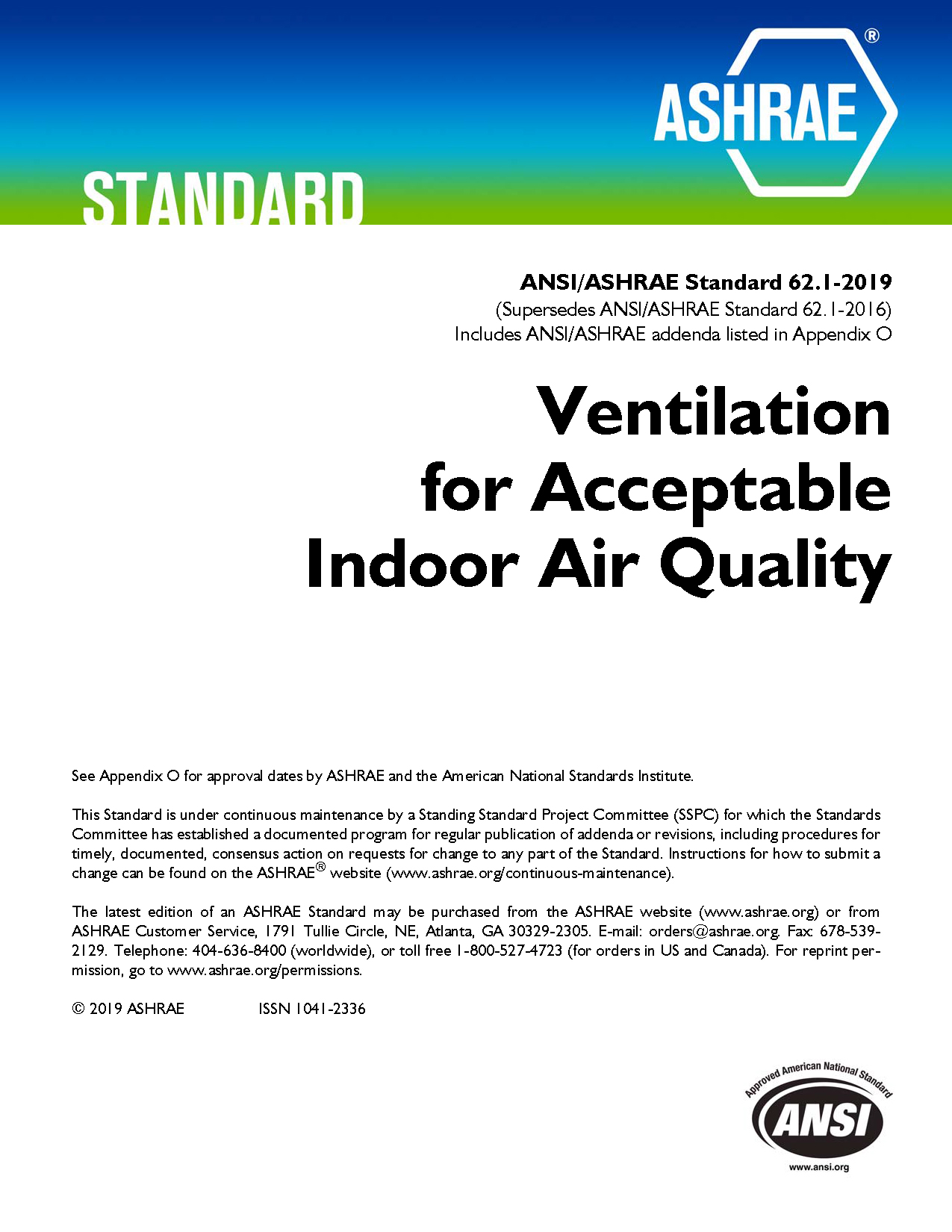Updated Standard 62.1 Simplifies, Improves Calculations and Procedures
From HVAC&R Industry Newsletter, October 31, 2019
The recently updated ANSI/ASHRAE Standard 62.1-2019, Ventilation for Acceptable Indoor Air Quality, simplifies calculations and improves options in procedures for designers and practitioners to apply in many of their designs, said Jennifer Isenbeck, P.E., Member ASHRAE, who is chair of the standard’s project committee.
The 2019 version of the standard includes recent research and equipment updates, removes citations and provides clarification and options to users.

“ASHRAE 62.1-2019 will continue on a path of improved indoor air quality to address all of humanity. The updates in this document hope to achieve clarity to the user, address misinterpretations and include improved equipment and building requirements,” she said.
Among the changes is a simplified Ventilation Rate Procedure to improve calculations for system ventilation efficiency and zone air distribution effectiveness.
“The Natural Ventilation procedure has been enhanced, resulting in more applicability to climate zones and regions where it can be utilized,” said Isenbeck.
When using the VRP, additional occupancies have been added, and other standards have been referenced where appropriate, such as ANSI/ASHRAE/ASHE Standard 170, Ventilation of Health Care Facilities, and ANSI/ASSP/AIHA Z9.5, Laboratory Ventilation, according to Isenbeck.
“There has also been an emphasis in equipment and building performance that recognizes improved humidity control and ozone producing devices,” she said.
First published in 1973 as Standard 62, Standard 62.1 specifies minimum ventilation rates and other measures for new and existing buildings to provide acceptable indoor air quality that minimizes adverse health effects.
The revised 2019 edition of the standard includes significant changes, including:
- New informative tables of ventilation rates per unit area for checking new and existing buildings ventilation calculations
- Simplified version of the Ventilation Rate Procedure improving calculations for system ventilation efficiency and zone air distribution effectiveness
- Modified Natural Ventilation Procedure calculation methodology
- Revised scope to specifically identify occupancies previously not covered
- Natural ventilation now requires considering the quality of the outdoor air and interaction of the outdoor air with mechanically cooled spaces.
- Humidity control requirements are now expressed as dew point and not as relative humidity.
The 2019 update includes new material in Section 5.7, which addresses ozone producing equipment, and 5.1, which details maximum indoor dew point reflect concerns of designers and practitioners, according to Isenbeck.
“Further, the document recognizes that not all procedures are equal, nor are all occupancies equal. The revised procedures, along with informative appendices, will provide insight on the intentions of designing and maintaining a minimum ventilation and indoor air quality. Our goal is to address both,” said Isenbeck.
Hoy Bohanon, P.E., Life Member ASHRAE, who served as the committee’s chair from 2015 to earlier this year, said designers also have the opportunity to develop more efficient air distribution systems by taking credit on zone air distribution effectiveness (Ez) with the standard.
Isenbeck said the standard project committee worked diligently over the past three years to respond to various interpretation requests and user inquiries. A clarified Table 6.1 “Minimum Ventilation Rates in Breathing Zone” is the result of this work, she said.
Isenbeck also recognized other ASHRAE members for their contributions to this update, including Bohanon and committee and subcommittee chairs Wayne Thomann, Member ASHRAE; Tina Brueckner, Member ASHRAE; Nathan Ho, P.E., Associate Member ASHRAE; Dan Pettway, Life Member ASHRAE; and Brian Hafendorfer, P.E., Member ASHRAE.
“Members should know that we have listened to and acknowledged their requests,” Isenbeck said. “The committee may not be able to accomplish all, but the ANSI process has allowed a fair and transparent pathway to improve this standard.”